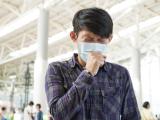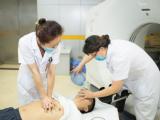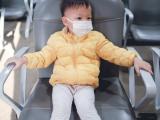May 15, 2003 (CIDRAP News) – Recommended infection control precautions apparently failed to protect nine Toronto hospital staff members from contracting SARS (severe acute respiratory syndrome) while caring for a critically ill SARS patient, the Centers for Disease Control and Prevention (CDC) reported today.
Six of the healthcare workers were present during a difficult intubation procedure that may have generated aerosolized infectious particles, the CDC reported in the May 16 issue of Morbidity and Mortality Weekly Report.
In view of the Toronto case, "We are looking at the adequacy of our guidelines for preventing SARS transmission during procedures that generate aerosols," CDC Director Julie Gerberding said during a press briefing today.
The index patient in the Toronto episode is a 54-year-old physician who became ill early in April after caring for three SARS patients, according to the report. He was hospitalized Apr 8 and placed in intensive care Apr 13 with a severe cough. During the insertion of a breathing tube, the patient had "copious frothy secretions," the report says. Gerberding said, "During the actual intubation, there was a great deal of opportunity for aerosolization through the coughing mechanism."
Nine hospital staff members who had cared for the patient around the time of the intubation became ill between Apr 15 and 21 with symptoms suggesting SARS. (Two other involved workers also got sick, but their symptoms didn't match the SARS profile.) The workers all reported that they had worn the recommended protective equipment, including gowns, gloves, PCM2000 duckbill masks, and goggles, each time they entered the patient's room.
However, the workers had not been fit-tested for their masks, and one nurse said his mask didn't fit well, according to the report. Also, some of the workers may not have followed the correct sequence in removing their protective equipment (ie, gloves first, then mask and goggles).
The healthcare workers could have been exposed to the SARS by direct contact with the patient or with large respiratory droplets, but this would have required a lapse in precautions, the report says. The other possibility is that the virus spread through the air and the workers' respiratory protection either was inadequate or was not used properly.
SARS patients "who are experiencing rapid clinical progression with severe cough during their second week of illness should be considered particularly infectious," the article states. "When intubation is necessary, measures should be taken to reduce unnecessary exposure to HCWs [healthcare workers], including reducing the number of HCWs present and adequately sedating or paralyzing the patient to reduce cough."
The CDC is developing new infection control recommendations for aerosol-generating procedures, according to the article. But Gerberding said, "We are not moving in the direction of a full containment suit at this point."
Gerberding also said today that the United States had only one new probable SARS case in the first 15 days of May, compared with 32 cases in April. She called that an indication that the travel advisories regarding countries that have ongoing SARS transmission are working.
She also announced that the CDC has canceled its travel alert for Vietnam because more than 30 days have passed since the onset of the last probable SARS case there. CDC travel alerts advise travelers of a health concern and suggest they take precautions while in a country; travel advisories are recommendations to postpone nonessential travel to a country.
In other SARS developments, the World Health Organization (WHO) announced yesterday it was taking Toronto off the list of places with recent local transmission. The last locally acquired SARS case in Canada was isolated Apr 20, the WHO said. When more than 20 days have passed since isolation of the last locally acquired case, the chain of transmission is considered broken.
Today the WHO reported 85 new SARS cases and 11 deaths, bringing the cumulative global totals to 7,699 cases and 598 deaths. Mainland China had 52 new cases, and Taiwan, where authorities have been alarmed about the rapid spread of SARS, had 26. The deaths included four in mainland China and seven in Hong Kong, but Hong Kong had only five new cases.
Citing a theoretical risk of SARS transmission through blood products, the WHO today issued recommendations on SARS and blood safety. In areas with recent local SARS transmission, asymptomatic people should postpone giving blood for 3 weeks if they have had close contact with a SARS patient, the agency said. People who have had probable SARS should postpone blood donation for 3 months after full recovery, and those with suspected SARS should postpone giving blood for a month after their recovery, the agency said.
In another announcement today, the WHO issued guidelines for those hosting meetings attended by people from areas with recent local transmission of SARS. The agency said the enormous publicity about SARS "may have led to irrational behavior and the exclusion of people" from SARS-affected areas.
The guidelines say that asymptomatic people who have had no contact with SARS patients need take no special precautions other than to watch for any symptoms within 10 days after their arrival. If they experience symptoms, they should stay in their room and notify medical personnel. People who have been in close contact with SARS patients should not leave their country in the ensuing 10 days, the guidelines state. The CDC announced similar guidelines yesterday.
See also:
WHO SARS site
http://www.who.int/csr/sars/en/
CDC SARS site
http://www.cdc.gov/ncidod/sars/


















